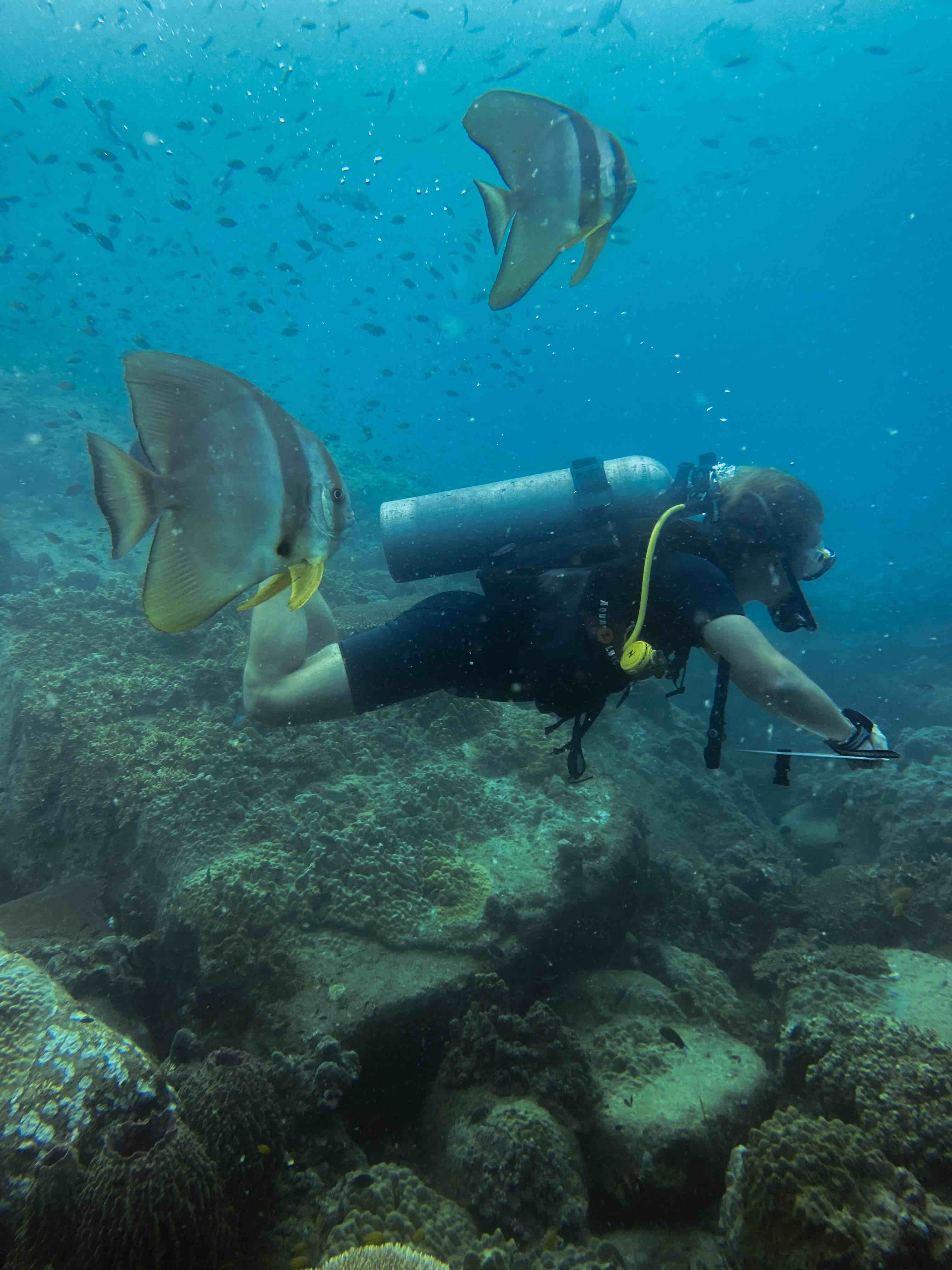Get in Touch
Email Address
Info@rhino.com
Phone Number
Sales: +098 765 4321

As part of my 4-week eco-internship at Roctopus, I assisted in a variety of ongoing research projects such as biodiversity surveying and artificial reef construction and maintenance. In addition to this, I had the opportunity to conduct my own personal research project. I wanted my project to focus on the impacts of the recreational SCUBA industry on coral health.
Coral reefs accommodate nearly a quarter of known marine species and have the highest biodiversity of any marine environment. Reefs also have a vital impact on humans: providing food, sheltering coastlines from storms, and generating income through tourism and recreation.
Coral reefs are currently in massive decline and are at risk from a variety of anthropogenic factors. In Southeast Asia, human activities threaten an estimated 88 percent of the reefs, 50 percent of which are considered at ‘high’ or ‘very high’ risk. Whilst pollution and climate change are the most impactful factors, the recreational SCUBA industry also acts as a stressor for reef health. In 2019 the director of the UN’s Reef-World Foundation stated that diving-related damage to reefs is becoming an increasingly significant issue and an estimated 88% of divers make harmful contact with the reef at least once durin a dive.
Koh Tao has a global reputation as one of the best locations to learn to dive and over 80,000 divers are certified annually here at PADI centers alone. Consequently, the reefs around the island are at particular risk from diving-related damage. Motivated by this, I decided to survey instances where coral has been broken to evaluate the impact of diving on the health of Koh Tao’s reefs.
I investigated the number of coral breakages at 4 dive sites around the island. To distinguish an instance of coral breakage from general coral debris I set criteria that it must be clear which colony the broken coral fragment originated from and multiple broken fragments in close proximity would be considered as a single breakage event. Each dive site was surveyed for between 50 and 60 minutes, all observed breakage events were recorded and additionally the growth pattern and genus of the affected coral colonies was noted. I then consulted multiple dive shops on the island about which sites they visited most often, especially with beginner divers, to try and determine the relative popularity of the dive sites I had surveyed.
The data I collected indicates a positive correlation between dive site popularity and number of coral breakage events. The two most popular sites surveyed, ‘Twins’ and ‘White Rock’, had 31 and 57 breakages respectively, compared to the least popular site ‘Shark Island’ which only showed 19 breakages. The data also showed that branching and corymbose coral structures are particularly vulnerable to diver damage, as a result of this, Acropora and Pocilliopora genera are the most impacted.

My results corroborate other studies such as Cheuk-Sun Au. A et al. (2014) who surveyed coral breakage in Hong Kong and found a similar positive correlation between the number of broken coral colonies and number of divers visiting the site. This study also found that branching corals were among the most impacted.
My study could be broadened by surveying more dive sites around Koh Tao. In particular, sites such as ‘Mango Bay’ and ‘Aow Leuk’ were frequently mentioned by dive shops as typical sites visited by beginner divers, so would be good locations to survey.
From my project I can conclude that the recreational SCUBA industry on Koh Tao is impacting the reef health and increased diver activity is leading to more incidences of coral damage. However, these damages can potentially be reduced by focusing on educating beginner divers on the importance of protecting the reefs and by ensuring buoyancy skills are adequate before diving over them.
Written by Thomas Hollingsworth – Marine Ecology and Conservation Intern at the Roctopus ecoTrust